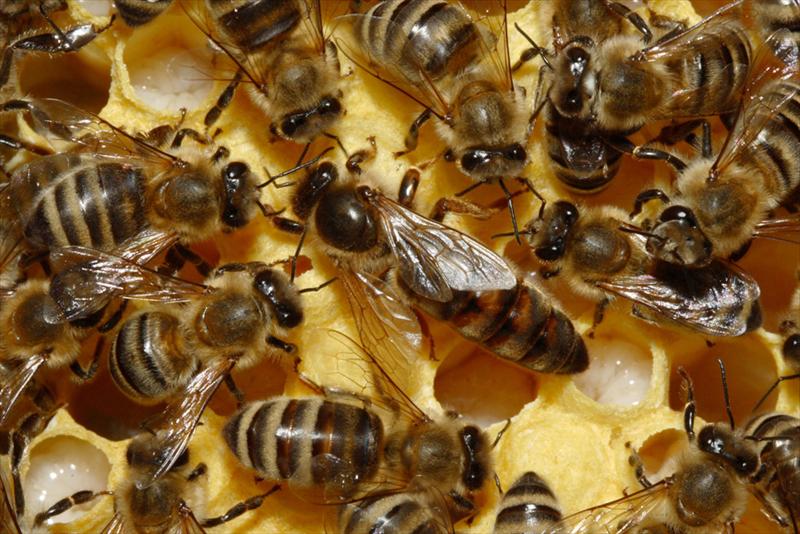
As Bees Die off, the EPA Shuffles Its Feet
Lately it seems like bees just can’t get a break. This is the tenth consecutive year of exceptional annual bee losses. And despite heightened attention to the plight of the nation’s pollinators—which are essential to producing $15 billion worth of U.S. agricultural products a year—these losses continue to grow.
Beekeepers and scientists point to a suite of factors impacting bee health. But fundamentally, what’s stressing bees most is our current approach to agriculture: extensive pesticide use, crop monocultures, and planting patterns that have eliminated many of the blooming plants important to bees. Recent science also shows that multiple pesticide exposures are weakening bee immune systems and making them more vulnerable to diseases and pests.
January 20, 2016 | Source: Civil Eats | by Elizabeth Grossman
Lately it seems like bees just can’t get a break. This is the tenth consecutive year of exceptional annual bee losses. And despite heightened attention to the plight of the nation’s pollinators—which are essential to producing $15 billion worth of U.S. agricultural products a year—these losses continue to grow.
Beekeepers and scientists point to a suite of factors impacting bee health. But fundamentally, what’s stressing bees most is our current approach to agriculture: extensive pesticide use, crop monocultures, and planting patterns that have eliminated many of the blooming plants important to bees. Recent science also shows that multiple pesticide exposures are weakening bee immune systems and making them more vulnerable to diseases and pests.
At the heart of this debate are neonicotinoids, now considered the world’s most widely used type of pesticide. When the U.S. Environmental Protection Agency (EPA) first approved neonicotinoids for use in the 1990s, many questions about their toxicity were left unanswered. But they were known to be toxic to bees at high levels of exposure. Now, in a just released draft assessment of imidacloprid—one of a handful of neonicotinoids in use and the first of four such assessments scheduled—the EPA says that any “residue level” above 25 parts per billion may harm “pollinator hives.”
This is significant, especially considering the way neonicotinoids are most often used: in seed treatments as systemic pesticides. As systemics, they stay with the plant as it grows and are present in nectar, pollen, and leaf surface moisture—places where bees can be exposed repeatedly to just the types of levels EPA now says are harmful.
In the U.S., neonicotinoids are now used on most of the corn and soy we grow, as well as on crops like citrus, cotton, wheat, grapes, and nut orchards. An estimated 150 million-plus acres are planted with neonicotinoid-treated seeds across the U.S. They’re also in many landscaping and garden products and are used to treat outdoor building materials. And their use has escalated rapidly. According to the U.S. Geological Survey, between 2004 and 2013, neonicotinoids used on corn went from less than half a million pounds to over 3 million pounds, and use on soy went from virtually none reported to over a million pounds.
